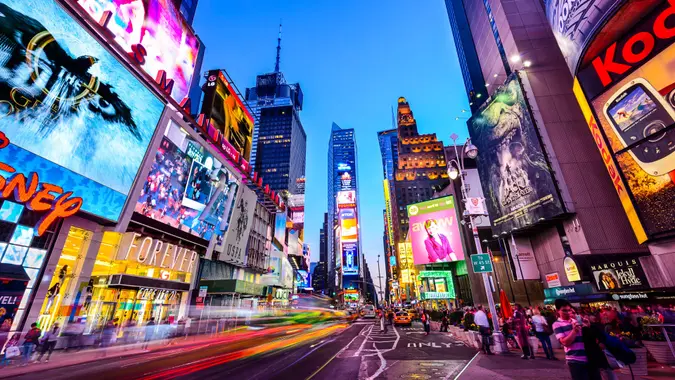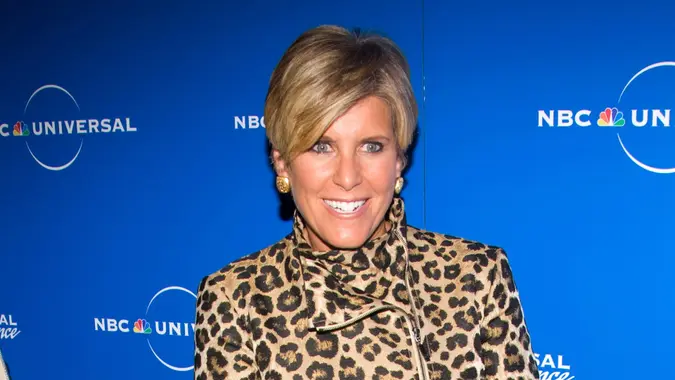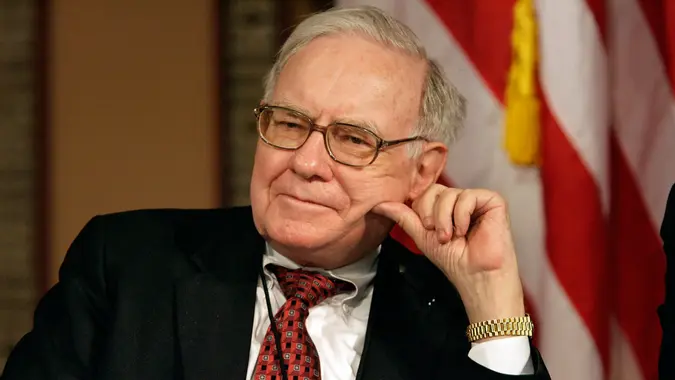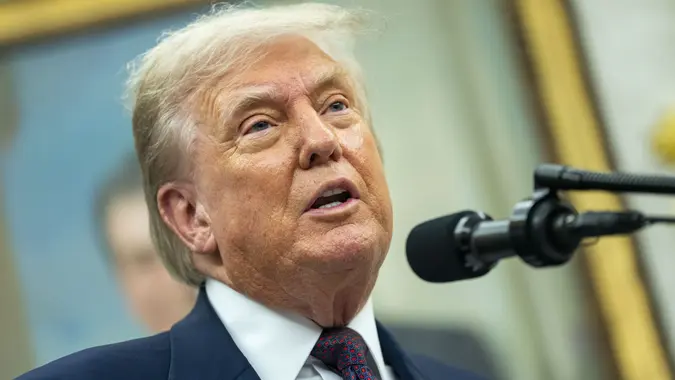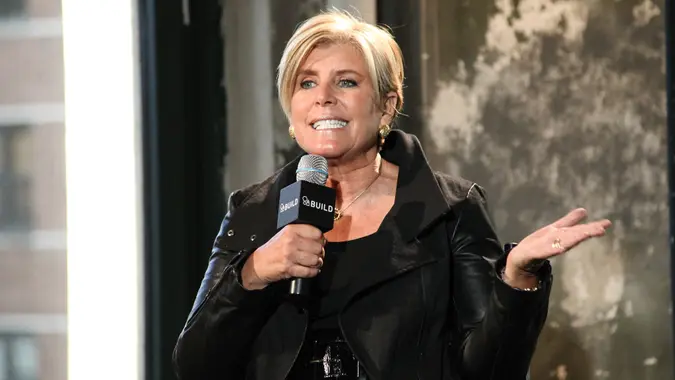Apple Is Spending $500 Billion To Avoid Tariffs — 3 Experts Reveal Whether This Will Raise or Lower Prices

Commitment to Our Readers
GOBankingRates' editorial team is committed to bringing you unbiased reviews and information. We use data-driven methodologies to evaluate financial products and services - our reviews and ratings are not influenced by advertisers. You can read more about our editorial guidelines and our products and services review methodology.

20 Years
Helping You Live Richer

Reviewed
by Experts

Trusted by
Millions of Readers
In February, Apple announced it would invest $500 billion in the U.S. over the next four years, to reduce dependence on foreign supply chains.
They framed it as an “America-first” initiative, and a way to prevent tariffs from taking too big a bite out of, well, the apple. Specifically, they point to a new manufacturing plant in Houston that they plan to build alongside partners.
But will it really save them money? And even if it does, will they pass those savings on to consumers in the form of lower prices?
Also find out how Trump’s trader war may impact American consumers.
Costs Now, Savings Later (Maybe)
Apple’s U.S. spending push might save them money in the long run.
Cassandra Cummings, CEO of electronics manufacturer Thomas Instruments Inc., points out how long it will take to get any new manufacturing production going.
“It will likely take a couple years to fully bring these facilities online and up to speed to match their foreign manufacturing lines,” she explained.
That makes it a long-term investment for Apple, not an instant win. Don’t expect any cost savings or price relief in the immediate future.
Uncertainty Around Future Policies
For any U.S.-based manufacturing to actually save the company money, the stiff tariffs would have to remain in place even when President Donald Trump leaves office.
In fact, Cummings argues that the federal government would also have to keep regulations lighter too, for Apple to see any savings in the long run.
“If future U.S. government administrations change those policies, then anything manufactured in the U.S. will be more expensive,” she pointed out. “We have higher standards for employee safety and wages, and vastly more environmental regulations than foreign nations.”
It just costs more money to manufacture goods in the U.S.
Apple Excels at Keeping Profit Margins High
There’s a reason why Apple boasts the largest market capitalization in the world: They consistently keep their profit margins high.
They do that through a combination of selling high-end products and clever marketing. Apple excels at convincing buyers to pay premium prices for their products.
“Apple has always maintained high profit margins,” noted Fergal Glynn, head of marketing and AI security advocate of Mindgard. “This tends to result in increased costs for consumers rather than the company absorbing them.”
In other words, don’t hold your breath for Apple to pass on any savings to you, even if they actually achieve them.
Marketing Maneuver Based on Accounting Tricks
Dev Nag, CEO of QueryPal, sees mostly smoke and mirrors in Apple’s announcement.
“Apple can satisfy this headline-grabbing commitment through strategic accounting more than aggressive new spending. Apple already spends over $100 billion yearly in the U.S. on supply chain procurement and wages,” he said.
That leaves roughly an extra $25 billion to invest each year for the next four years. That’s not chump change, but it’s a far cry from the $500 billion headline. Nag argues that even that can largely be done through reclassifying some of Apple’s current expenses.
It makes for brilliant messaging and marketing.
“Apple gets insulation against tariffs, political goodwill and favorable regulatory treatment,” Nag explained. “Apple has pulled similar narrative tactics previously, announcing major U.S. investment initiatives under both Trump (in 2018) and Biden (in 2021). Each time, they expanded the headline figure but recycled key commitments like the number of jobs created, touting numbers like $350 billion over five years back in 2018.”
What’s the Public’s Priority?
Cummings points out that for decades, the U.S. has required domestic manufacturers to pay high wages and benefits while following strict environmental regulations. Yet, we allow imports of cheap goods produced with terrible working conditions and environmental impact.
“What do everyday people care about more: Price or ethical treatment of workers and the environment? You can’t have both, given the cost of current manufacturing regulations,” she said.
Put like that, Americans have some soul searching to do.
Editor’s note on political coverage: GOBankingRates is nonpartisan and strives to cover all aspects of the economy objectively and present balanced reports on politically focused finance stories. You can find more coverage of this topic on GOBankingRates.com.
More From GOBankingRates
- Nearly 1 in 3 Americans Hit by a Costly Holiday Scam, Norton Survey Shows -- How To Avoid This
- Here's What Retirees Wasted the Most Money On in 2025 -- and How To Avoid It in 2026
- How Middle-Class Earners Are Quietly Becoming Millionaires -- and How You Can, Too
- 6 Safe Accounts Proven to Grow Your Money Up to 13x Faster
 Written by
Written by  Edited by
Edited by 










